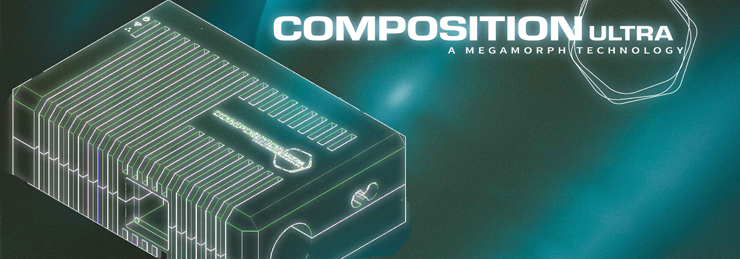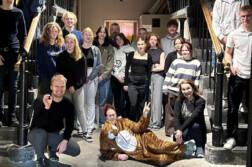In the semester of 2023–2024, I participated as a student in Aalto Design Factory’s Product Development Project (PDP) course. This experience gave me more in-depth views and insights into the services that a Design Factory can offer. The PDP course shares the same core goals as many of the Design Factories worldwide, primarily bringing together different disciplinary teams, researchers, and businesses – referred to as sponsors – to tackle complex, real-world problems using various design thinking processes.
PDP is not a “regular” university course because it is a demanding and time-consuming course spanning over nine months, taking up almost an entire school year. This ensures that the students are fully committed and engaged to the project and its ongoing cycle while providing them the opportunity to become experts in their own projects. This year, we had the opportunity to be sponsored by companies funded by ATTRACT. ATTRACT is a European project involving six leading scientific laboratories, including CERN, the European Organization for Nuclear Research. It aims to foster the development of future technologies through collaboration between experts, industries, and researchers to co-create new products, companies, and jobs.
Despite being part of the HAMK Design Factory staff, I enrolled in this course as a student with a few other HAMK students. From HAMK, we had 5 students, including me and students from International Business and Electric and Automation Engineering. My team consisted of me, two HAMK students, and eight Aalto students, making us a team of 11 people. Our team had a diverse skillset, with members from various engineering disciplines, business, and design.
Our sponsor company provided us with advanced technology based on graphene and its potential use in display technology. Unlike most of the other teams, which were provided with a specific problem to solve, our challenge was to identify a problem that this technology could address. This reverse approach made the initial phase particularly challenging, as we had to have a deep understanding of the given technology and creatively ideate its potential applications.
Finding new solutions and inspiration in CERN
The highlight of our PDP journey was an incredible opportunity to visit the European Organization for Nuclear Research, CERN, in Switzerland in February. This trip allowed us to engage in an intensive week of ideation and product development at CERN’s Design Factory, IdeaSquare. The week-long experience was not only good for our team bonding but also a catalyst for our project as we finally were able to think outside of the box. We were no longer constrained by the display aspect of the project and were more able to see how the display part could be integrated into something more experimental.
Inspired by our CERN experience, we returned to Finland with renewed enthusiasm and a clearer vision for our project. Our focus shifted towards identifying user cases, exploring potential applications in various industries, and progressing through the prototyping phase as we were getting closer to the end of the course. The Prototyping phase leveraged my expertise in design, allowing me to contribute significantly despite my limited background in technology and physics. Using AutoCAD, we designed a 3D model of our prototype, which I 3D printed at HAMK Design Factory using our printers. We decided on 2 prints made with filament printers using PLA and one to be printed in Aalto Design Factory using an SLS printer. The filament prints that I made were to be displayed at the final gala in a mockup environment and to be touched and observed. The SLS print would be in two pieces, showing the inside design of the prototype, as it is an extremely accurate print. Concurrently, our team’s other designer worked on macro-scale examples of the prototype’s technology, ensuring that we covered all aspects of the design process.
Finally, after nine months of intense effort, collaboration, and innovation, we reached the climax of our project in May, the Final Gala. The week leading up to the gala was hectic, filled with booth construction, last-minute preparations, and some minor adjustments to everything. We built our gala booth to exhibit our product development as coherently as possible. We had a few posters showing the basic technology of our prototype, then the macro-scale prototypes displayed for the visitors to test, and finally, our prototypes to be touched and one prototype in a mockup environment.
Reflecting on the PDP course, I realize now how transformative this experience has been. It provided me with practical insights into product development, bettered my teamwork and problem-solving skills, and underscored the importance of interdisciplinary collaboration. Participating in the PDP not only expanded my professional horizons but also reinforced my passion for design and innovation, preparing me for future challenges in my career.
Author
Eeva Hirvinen, teaching assistant, HAMK Design Factory




